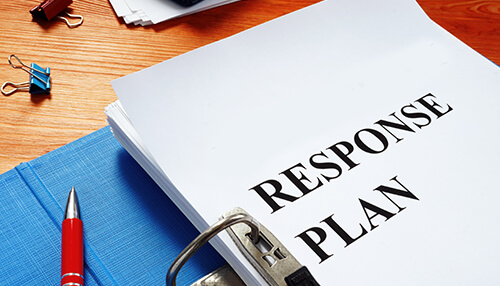Introduction
Organizations require flexible, agile structures that give leaders a real-time perspective of cyber threats. With the help of associated methods and tools, they may be used to address relevant concerns in order to guarantee that risk management is efficient. Enterprise risk management (ERM) principles, techniques, and procedures should be used by organizations to comprehend and rank the complexity of risks that contend for limited organizational resources.
In this article, we are going to discuss the 10 steps and conduct a risk analysis in your business plan.
1. Establish Risk Appetite And Governance
The organization questions themselves, “How do I start?” in this step. In order to achieve this, the organization creates a governance structure, decides how much risk it can accept, and provides guidelines for managing risk.
The ERM governance structure must provide direction for responsibilities, roles, regulations, assets, and flow of information because FORTE is intended to be used across the entire enterprise. Different concepts can be used to conceptualize risk governance.
2. Focus on Assets & Critical Services
The company asks itself, “What maintains us in business,” at this step. The risk management plans for asset management during this phase find and records assets, and keep the asset catalog up to date.
The most important step in the asset management process is planning. Executives of the organization must insist that key assets be identified and included in an asset catalog, regardless of whether FORTE is used to manage assets.
3. Determine the assets’ resilience criteria
The director asked himself, “What do we require to preserve our assets durable?” in this stage. The risk manager develops and records resilience criteria for every asset in the organization’s asset catalog and specifies how the organization will evaluate these requirements.
4. Measure the present-day capabilities
The company asks itself “What safeguards are presently in place” in this stage? The risk manager examines the company’s existing controls, evaluates their efficacy, and compiles a list of control systems in order of importance. Step 4 creates a standard control as an element of an iterative approach.
5. Determine the Assets’ Risks, Threats, and Vulnerabilities
What could possibly go wrong? is a question the company asks itself throughout this process. The risk manager takes into account how changes, such as those in technology, surroundings, market situations, and attack strategies, influence the company’s operations. By reviewing its crucial assets and recording the risks, challenges, and weaknesses related to them, the organization expands on its asset inventory.
6. Compare risks and capabilities analysis
The organization asks itself, “Where do our present conditions fall far short?” during this step. To examine the group’s risk data and develop a risk management plan, the risk manager collaborates with partners.
7. Prepare a response
The organization questions itself, “How then do we respond to consequences?” at this step. The FORTE methodology has thus far concentrated on locating and examining threats to specified services and resources.
8. Put the Response Plan into action
The company poses the question, “How do we guarantee that our answers reduce total risk exposure?” at this stage. The risk manager makes ensuring that projects are formed by the company to carry out the plans.
9. Keep an eye on everything and assess effectiveness
The organization poses this question at this stage: “How successful is the Program?” By using FORTE, the business may monitor the effectiveness of its ERM program and stay up to date on it.
10. Repeat, Review, and Update
This stage involves asking the organization, “Is our ERM program successful? The efficacy of the ERM program is reviewed and assessed by the risk manager, who then creates, executes, and performs the FORTE procedure.
Conclusion
These are the top 10 steps that help in conducting a risk analysis in your business plan.




